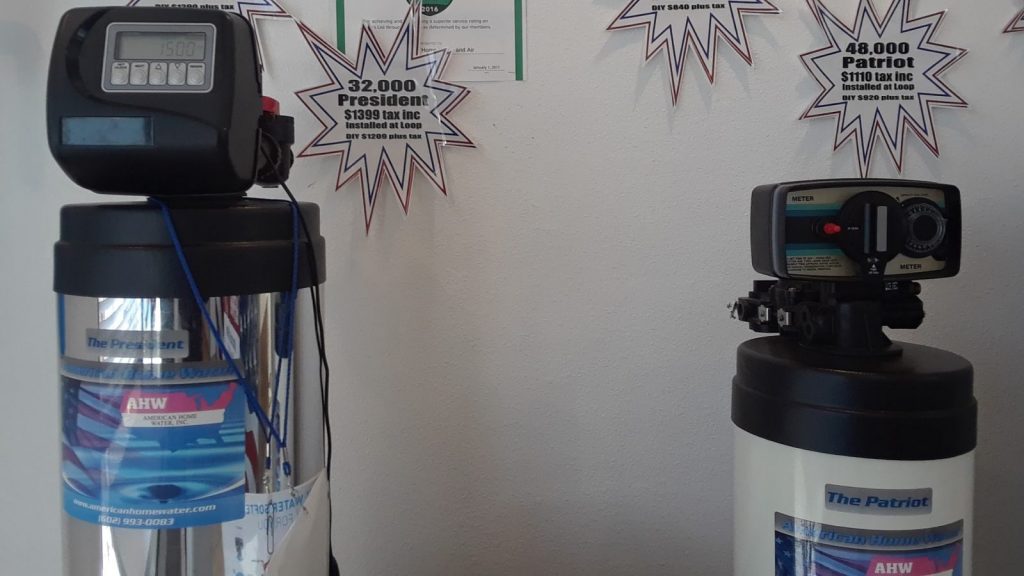If you are dealing with hard water issues, keep reading. There’s a better way to improve your water quality. The answer is a water softener with reverse osmosis.
If you don’t know what it is, don’t worry. We’ll explain the system and how it works throughout this guide. By the time you’ve finished reading this, you may consider having a whole-home reverse osmosis system installed in your home.
Not only will installing one will soften your water, but it will also yield all kinds of benefits in the process.
Keep reading to find out how to get a water softener with reverse osmosis system installed in your home.
Let’s discuss what reverse osmosis is first before going further.
What is Reverse Osmosis?
Reverse osmosis is a type of water filtration. The name reverse osmosis describes the process that water undergoes to become filtered. Reverse osmosis water is flavorless and one of the purest types of water you can drink.
Some people love the hard edge of mineral water. Others prefer their water to be tasteless and odorless. If you prefer tasteless and odorless water, you may enjoy reverse osmosis water.
This type of water purification is nothing new. In fact, it can be dated back to its discovery in the mid-18th century. However, it was originally used for desalinating seawater back in the 1950s.
In other words, it was intended to remove salt and other contaminants from the ocean, which was considered a water supply for those living in the coastal United States. Reverse osmosis is also used for liquids such as alcohol to help increase the proof levels.
Reverse Osmosis Filters Out More Than Carbon Filter
Some of the things that reverse osmosis filters include:
- Nitrate
- Perchlorate
- Arsenic
- Hexavalent chromium
Every municipal center has different water additives. You should contact your local municipality to get a report on the water contents.
Some sources of drinking water have nitrate, perchlorate, arsenic, and hexavalent chromium. There is a link between these chemicals and various cancers.
A carbon filter does not have the capability of removing trace amounts of many chemicals. For this reason, many people elect to use reverse osmosis.
The Benefits Of Reverse Osmosis
If you don’t have a whole-house reverse osmosis system set up, you are certainly missing out on some benefits. Let’s take a look at what it can do for you:
It can remove almost all of the contaminants
If you are worried about your water containing harmful contaminants, worry no longer. A reverse osmosis system can definitely get the job done. By the time the water comes out of the tap and into your glass, you’ll have the purest drinking water possible.
Healthier skin and hair
With soft water, thanks to reverse osmosis, your skin and hair will look and feel healthier. Hard water can do quite a bit of damage.
It saves you money
If you hate spending a ton of money on water wasted, then there is good news. Reverse osmosis can reduce that. In fact, the money you spend having a whole-house reverse osmosis system installed will pay for itself within the first year of operation.
Is Reverse Osmosis Water Hard or Soft?
Reverse osmosis water is soft.
Many homeowners install a whole-home water softener system independent of reverse osmosis. Water softeners are applied to entire home systems to reduce buildup that can cause problems.
Although reverse osmosis installation is possible for an entire home, there are other more cost-effect water softeners.
Water Softener Reverse Osmosis Combo
By now, you probably realize that water softener and reverse osmosis systems are similar.
Water softeners use a chemical process called ionization. Ionization is the process by which magnesium and calcium turn into salt.
The difference between a water softener and a reverse osmosis system is the process of filtering versus conditioning. Reverse osmosis physically filters unwanted minerals from the water source. Water softeners use conditioning to alter the existing water source.
Conditioning is more eco-friendly because existing water remains in the system. Reverse osmosis is less eco-friendly because the unwanted water becomes waste.
A water softener reverse osmosis combo is possible. Many homeowners choose to install a water softener on the whole-home system. When you apply a water softener to a home system, the entire water supply undergoes ionization.
The next step of the water softener reverse osmosis combo is to apply reverse osmosis to individual faucets. The softened water will filter through the reverse osmosis faucet and cause less waste. A water softener reverse osmosis combo is also more cost-effective than buying either option individually.
Conclusion
If you are in search of softer water, you’re in for a treat. A water softener and reverse osmosis system may be just what you need in your home.
American Home Water & Air can help. Contact us and let us install your whole-home reverse osmosis water system and help you save money.
[related_posts_by_tax posts_per_page="3" format="thumbnails" image_size="medium"]









